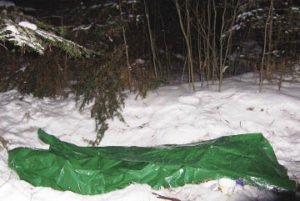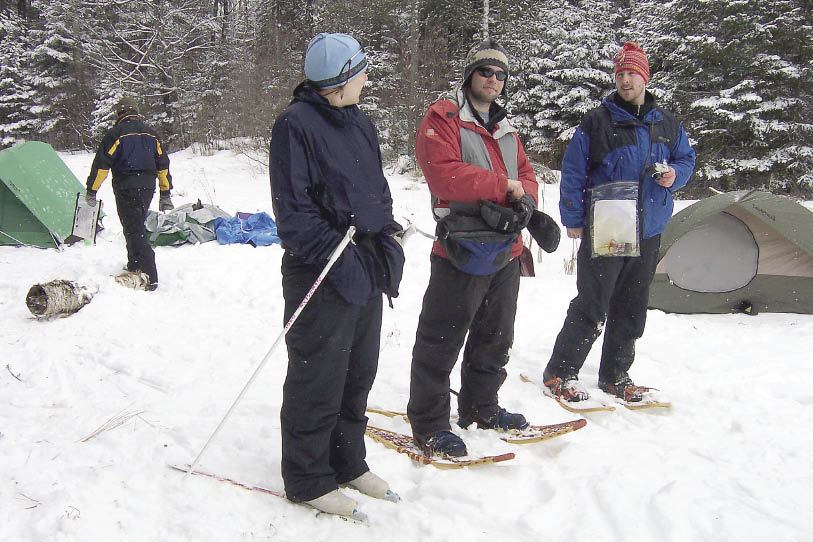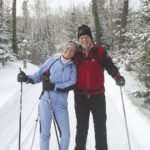While some people react to the idea of winter camping with a reflexive shiver, the truth is that camping out in the winter is just as fun and comfortable as a summertime excursion–as long as you’re prepared. Plus, skis and snowshoes let you explore uncharted territory and have places like the Boundary Waters virtually to yourself.
Here’s how to wring maximum joy out of winter: the fourth camping season.
Confessions of a Winter-Camping Convert
Stupid class. Stupid cold. I should fake a sudden case of hantavirus.
I trudged across a wind-scythed winter landscape in borrowed snowshoes, considering ways to escape.
It was a February morning. My outdoor skills class at the University of Minnesota-Duluth had driven the 30-odd minutes from Duluth to Boulder Lake. We donned skis and snowshoes and trekked across the frozen lake, carrying packs and hauling gear sleds called pulks, toward campsites where we would spend the night.

I was less than thrilled about this mandatory excursion, mainly because I was certain I would freeze solid overnight, like a Popsicle. They would have to chisel me out of my sleeping bag.
My group’s campsite was a clearing—actually a bay—blanketed with cattail-pierced snow. Aspen, cedar, pine and spruce trees sheltered it from the wind, which made fire-building easy. Setting up camp occupied a solid portion of the day.
Soon it was late afternoon. “I’m going to go dig my coffin,” I announced.
I dragged myself away from the fire, yanked a shovel from its upright perch in the snow, and marched into the woods.
Snow trenches, or, more evocatively, “snow coffins,” are body-sized holes you dig out of the snow to sleep in. The side walls block the wind and the ground acts as an insulator. For my snow coffin, I dug a depression roughly six feet long, three feet wide and a foot deep. Then I scurried back to the fire and melted part of my right boot.
Winter camping is all about warmth. You dress in multiple layers to retain body heat. You move to stay warm. You snack to maintain energy stores. And, if you’re like my group, you build a fire and spend much of the afternoon and evening sitting by it, swapping stories and laughing.

And melting things. In 24 hours, we accidentally melted four water bottles, a boot sole, a bumper sticker, two Ziploc bags, and a tube of lip balm.
As day faded into night, I discovered that, thanks to packing the right gear and doing the right things, I had stayed cozy and was actually enjoying the stark scenery and sense of aloneness. It felt like we were the last people on Earth.
Around 8 p.m., eyelids drooping, I used the burrito method to hunker down for the night. That is, I tucked a tarp into my trench, laid my sleeping pads and cold-weather sleeping bag in the middle, climbed in, and folded the tarp around myself. Snow would stay out, heat would stay in.
I woke once. When I poked my face out of my cocoon, the wind had calmed. The night was still and serene. I was glad I hadn’t come down with anything.
Story and photos by Shelby Gonzalez
Editor’s Note: This story was originally published in the 2012 February-March issue of Northern Wilds Magazine.



